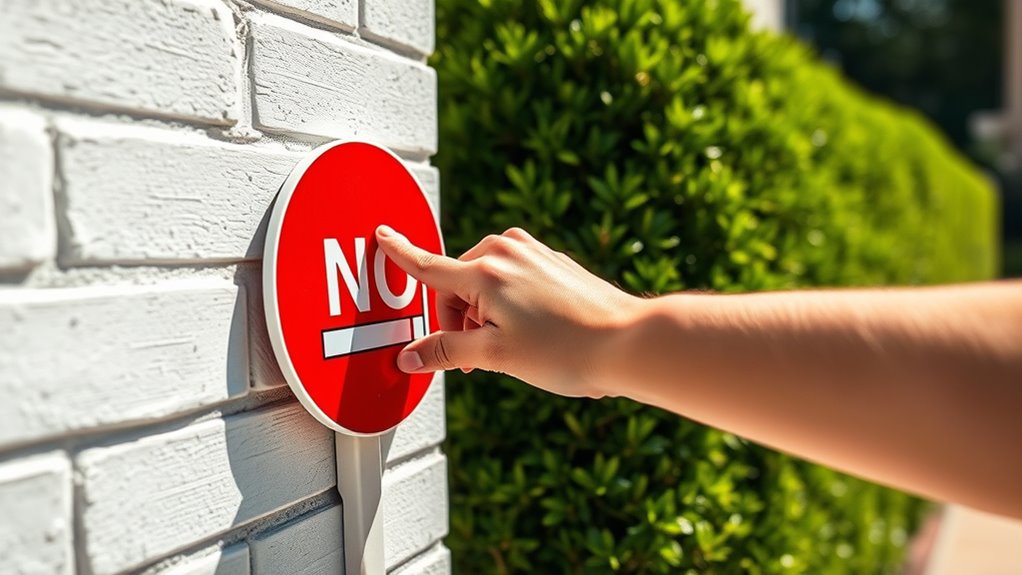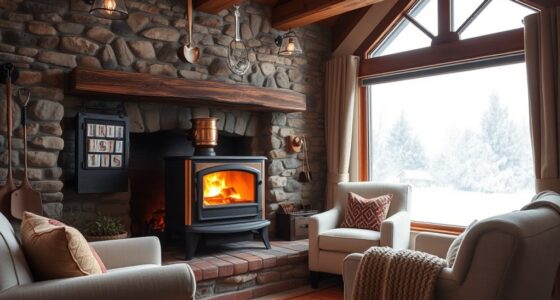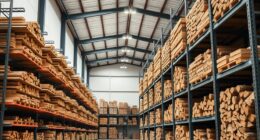As a homeowner, you are responsible for understanding and following local smoke-control rules to keep your home compliant and protect community air quality. This includes properly ventilating your spaces, using approved fireplaces during restrictions, and obtaining necessary permits for installations or upgrades. Regular maintenance and staying informed about seasonal or high-pollution restrictions help prevent violations. To make certain you’re fully aware of what’s required, continue exploring the key steps for meeting your responsibilities.
Key Takeaways
- Obtain necessary permits and schedule inspections before installing or upgrading ventilation or fireplaces.
- Use approved, low-emission fireplaces and burn seasoned wood to reduce particulate emissions.
- Maintain ventilation systems regularly to ensure proper airflow and pollutant dispersal.
- Comply with seasonal or air quality-related restrictions on open fires and wood-burning appliances.
- Stay informed about local regulations to ensure ongoing compliance and contribute to community air quality efforts.

If you own a home, understanding smoke-control regulations is vital for maintaining a safe and healthy living environment. These rules are designed to limit indoor and outdoor air pollution, protect your health, and ensure your property complies with local laws. One key aspect of these regulations involves ventilation standards, which set the minimum requirements for airflow and air exchange within your home. Proper ventilation helps disperse smoke, fumes, and other airborne pollutants, reducing the risk of indoor air quality issues. Whether you’re installing new HVAC systems or upgrading existing ones, knowing the local ventilation standards will guide you in choosing effective solutions that meet legal requirements. It’s important to guarantee that your ventilation system is properly maintained and functioning efficiently, as neglect can lead to the buildup of smoke and harmful particles inside your living space. Additionally, ensuring that your home’s natural materials are properly maintained can help reduce the accumulation of indoor pollutants and improve overall air quality.
In addition to ventilation standards, fireplace restrictions form a vital part of smoke-control regulations. Many municipalities impose restrictions on the types of fireplaces, stoves, or chimneys you can operate, especially during high-pollution periods or in areas prone to air quality issues. These restrictions aim to limit the amount of particulate matter released into the atmosphere and prevent outdoor air pollution from affecting neighboring homes. If you have a wood-burning fireplace, you might need to use approved, low-emission models or follow specific operation guidelines, such as burning only seasoned wood and avoiding the use of accelerants. Some areas may even prohibit open fires during certain seasons or when air quality indices are poor. It’s your responsibility to stay informed about these restrictions and guarantee your fireplace usage aligns with local regulations.
Being aware of these rules also means understanding the permitting process for any modifications or installations related to smoke control. For example, if you plan to upgrade your fireplace or install a new ventilation system, you might need to obtain permits or inspections to verify compliance. Ignoring these requirements can lead to fines, legal issues, or even unsafe conditions for you and your neighbors. Regularly reviewing local ordinances helps you avoid inadvertent violations and guarantees your home remains compliant with current standards. By actively managing your ventilation and fireplace use, you not only protect your health but also contribute to the broader effort of air quality management in your community. Staying informed and adhering to these regulations is a proactive step toward a safer, healthier home environment for everyone.
Frequently Asked Questions
Are There Penalties for Non-Compliance With Smoke-Control Regulations?
Yes, there are penalties for non-compliance with smoke-control regulations. Penalty enforcement can include fines or other legal actions if you fail to meet compliance requirements. It’s important to adhere to these rules to avoid costly fines and potential legal issues. By understanding and following local regulations, you help ensure a healthier environment and demonstrate responsible ownership. Stay informed and proactive to prevent penalties and sustain compliance.
How Often Should I Inspect My Smoke Control Systems?
You should inspect your smoke control systems at least twice a year—because, of course, neglecting them is the best way to avoid trouble. Follow a maintenance schedule and use an inspection checklist to make certain everything’s in top shape. Regular checks catch potential issues early, keeping your home safe and compliant. Don’t wait for a problem; stay proactive and make inspections part of your routine.
Can I Install My Own Smoke Control Devices?
You can attempt DIY installation of smoke control devices, but it’s essential that the device is properly certified for safety and effectiveness. Always check the manufacturer’s instructions and local regulations before proceeding. If you’re unsure about your skills, consider hiring a professional to guarantee proper installation. Remember, improper installation could compromise your home’s safety and might violate local smoke-control regulations, so prioritize certification and compliance.
What Exemptions Exist for Certain Types of Residences?
Like a secret garden with hidden paths, some residences slip through the cracks of strict smoke-control rules. You might qualify for residence exemptions or special dwelling rules if your home is a historic site, a certain type of mobile home, or a designated agricultural building. Always check local regulations, because these nuances can turn strict rules into flexible guidelines, allowing your unique residence to breathe easier under specific exemptions.
How Do I Report Violations of Smoke-Control Regulations?
You should report violations of smoke-control regulations by following the local reporting procedures, which often involve contacting your city’s environmental or code enforcement agency. Be prepared to provide documentation requirements like photos, dates, and detailed descriptions of the violation. Make sure to include specific information about the location and nature of the breach. Prompt reporting helps authorities investigate and enforce smoke-control laws effectively.
Conclusion
By following your local smoke-control regulations, you help protect your neighbors and the environment. Remember, ignoring these rules can lead to fines or worse, a fire that could destroy your home—like the Great Fire of London. Stay vigilant and responsible; it’s your duty to keep your community safe. So, don’t be a Scrooge about these rules—support them, and together, you’ll ensure cleaner air and safer living for all.











